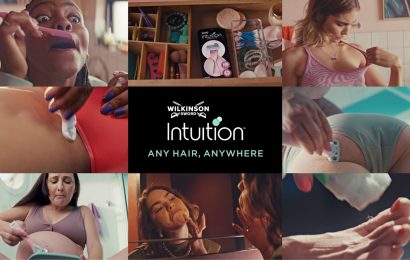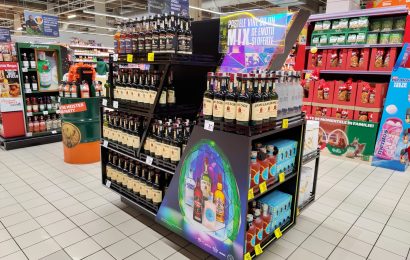Paul Caiozzo on creativity: You have to trust that it’s always inside you
Paul Caiozzo recently joined Goodby Silverstein & Partners as executive creative director of the New York office. During his career, he worked with Twofifteenmccann, Crispin Porter + Bogusky and Cliff Freeman and made memorable campaigns for Xbox and Burger King, including the “Whopper Freakout,” “BK Flame” and “Whopper Virgins” campaigns. He also worked as a freelancer creative director and writer, working directly with brands such as Vita Coco, Squarespace and Etsy as well as collaborating with Droga5 and Help Remedies for 2012’s Cannes Grand Prix–winning “Help, I Want to Save a Life” campaign.
Paul shared with AdHugger couple insights on his career, on what makes a freelancer rejoining the agency life, what’s the secret to come up with the best ideas and what will be the future of the industry.
AdHugger: You lived both the agency life and the freelancer life. What are the ups and downs of each?
Paul Caiozzo: Freelance focuses on one part of the process: delivering ideas. While that’s probably my favorite part, bringing those ideas to life is also pretty important. It can be difficult to actually get work done when you are inside an office all day. The actual act of being inside an office is challenging for me. It may change, but right now freelance is borrowing against your career. You have to rebuild it after a bit.
AdH: What about GS&P convinced you to get back to an office and a team?
P.C.: After a few years of freelancing, I was just ready to build again. And when I met Nancy and saw the team already in place, I knew I’d be ahead of the game here. Add to that the desire of everyone in the office to do some unique things, and I was sold.
AdH: Do you like teaching advertising, and why? What did you like most about your students?
P.C.: I think teaching advertising has made me a better creative director than any job ever did. You can’t fall into bad habits with students by saying things like, “Just do it please,” because they are there to learn and get better, and it’s your job to take them there. I realized my true job as a CD via my classes. My job is to explode the careers of every single person beneath me. So when I am old and irrelevant, I can beg one of them for a job.
AdH: You have a nice collection of clients you’ve worked with. How did you come up with the best ideas for each of them?
P.C.: I think of how that client last spoke to the world and what the next sentence should be. Sometimes that’s not what the client originally thought they wanted to tell the world. But when you connect those two things in a genuine way, you have a real story that people are going to care about.
AdH: How do you find The Idea? Where did you draw the inspiration from?
P.C.: I don’t think creativity is a lightning bolt. You have to trust that it’s always inside you, ready to be summoned up for whatever situation is in front of you. It needs to be a way of life for companies, and it needs to be a way of life for creatives.
AdH: What’s the secret in coming up with the catchiest idea? You definitely have an answer—quite a few virals, even more awards and some Lions on the shelf!
P.C.: Go as far out as you can. Push as hard as you mentally can. Then, have the strategic restraint to know how far is appropriate for the moment you are in. To me that’s what separates making an ad from art. This is a business in which we must improve our clients’ lives and also make a meaningful connection with their customers. You can’t have one without the other. Personally, I believe connections are made when advertising is closer to art, but that’s another tangent.
AdH: Which are some of the clients you’ve enjoyed working with the most?
P.C.: I love diversity. I move quickly because I can get bored easily. I’ve loved how many clients I’ve gotten to collaborate with.
AdH: Is there any work that you liked so much that you wished it would have been based on an idea you came up with? Can you tell which?
P.C.:
- Diamond Shreddies.
- The ROM candy bar campaign.
- The Telnet Argentina hair campaign by Santo.
- The “Big Noses” sale by Saatchi in Argentina.
AdH: What is the one thing anyone working in the creative industry has to remember?
P.C.: Delusional positivity. If you go dark, the game is over. I learned this the hard way.
AdH: Can you make a prediction on how the creative industry will look during the next couple of years? What do you think the main influencer will be?
P.C.: To me the industry is not changing that much. Every time I read about a new eyeball-face-mask-virtual-reality-social-uploader that you have to do a cool campaign on or another company touting a new model, I feel a sense of relief.
Whether it’s on a phone or a face mask or a TV, these are just media to connect with people. They’re no different than print or radio or TV were. Our arsenal is way bigger now, and a genuine thought was never more valuable.
The best creatives will always flock to the places that respect them, and the creativity and storytelling they so brilliantly bring to the table.







